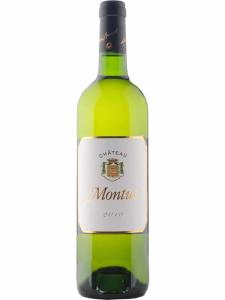Pacherenc du Vic-Bilh is an appellation specializing in sweet white wines from a small area of Gascony in far south-western France. Pacherenc du Vic-Bilh wines are late-harvested dessert wines made from various combinations of Petit Courbu, Petit Manseng, Gros Manseng, Courbu Blanc and Arrufiac. The classic Pacherenc de Vic-Bilh is sweet, rich and full flavored, with aromas of honey and tropical fruits. The less widely produced dry form, made from the same array of grape varieties, is Pacherenc du Vic-Bilh Sec.
The appellation laws for Pacherenc du Vic-Bilh sanction six grape varieties for use and seem geared towards blends rather than single-variety wines. In reality, however, a number of producers use 100% of their preferred variety – most commonly Petit Manseng or Petit Courbu. In addition to the local Gascon varieties mentioned above, Sauvignon Blanc is also permitted (valuable for its fresh flavors and acidity), although this 'outsider' variety from Bordeaux is used only in tiny quantities.
The official Pacherenc du Vic-Bilh viticultural area forms a rough square about 15 miles (25km) across. It covers 37 parishes, some with names as markedly southern-sounding as the appellation itself (the tiny villages of Séméacq-Blachon and Mascaraàs-Haron are obvious examples). The appellation's name is not that of a place, however – there is no village or town called 'Pacherenc' or 'Vic-Bilh'. It is instead derived from the regional dialectal words paisheradas (meaning roughly 'vineyard rows') and vic-bilh (meaning 'old country').
At the eastern edge of the area is the village of Madiran, which gives its name to Gascony's most famous wine – robust, red Madiran. This is more than just a co-incidence; Pacherenc du Vic-Bilh is effectively the white form of Madiran (if there were ever such a thing as white Madiran Blanc, this is it). The two appellations cover the exact same viticultural area, and could easily be combined into one were it not for the history, politics and tradition that have so far kept them separate.
The Adour River marks both the eastern and northern edges of the Pacherenc du Vic-Bilh production area (the river changes course from north to west here). The Adour was once of vital importance to the local wine trade, as it connected the local vineyards with the port at Bayonne and export markets beyond. Modern road transportation means that the Adour's logistical importance has all but disappeared. It retains a symbolic geographical significance, however, as it connects the Pyrenees mountains with the Atlantic – the two largest factors in southern Gascony's mild climate. The Atlantic lies a full 60 miles (96km) to the west, but is still influential; the climate here is measurably cooler and wetter than that further inland around Gaillac and Fronton. The average annual temperature is 55F (12.5C), and annual rainfall is around 39 inches (1000mm), concentrated mostly in late winter and spring.
The Pyrenees also have their influence, creating warm, dry fohn winds which keep the vineyards relatively healthy and free of rot in autumn. It is thanks to the warm, dry autumns here that the production of sweet, late-harvest wines is feasible and is so engrained in the local culture (both Pacherenc and nearby Jurancon specialize in the style). A wetter autumn would mean higher risk of rot and disease, making it impractical to delay harvest in order to achieve the high sugar concentrations required for late-harvest wines.
Pacherenc du Vic-Bilh sweet wines are made from hand-harvested grapes picked in multiple vineyard passes through the vineyard (tries successives). Harvest generally takes place in November and early December, when the grapes have dried out substantially, concentrating their sugars. To qualify for use, the juice must have natural sugar levels of at least 221 grams per liter (238g/l in the case of Petit Manseng grapes). In the finished wine, this translates to alcohol levels of around 12.5% by volume and residual sugar anywhere over 45g/l depending on the vintage. The drying-out process means that the grapes lose a significant proportion of their mass, and this is reflected in the appellation laws. The maximum yield for sweet Pacherenc de Vic-Bilh is 40 hectoliters of juice per hectare, compared to 60hL/ha for the dry wines.
The sec (dry) Pacherenc du Vic-Bilh wines are naturally much lighter, fresher and crisper and have the same kind of fruity, floral aromas found in the dry wines of Jurancon, just to the south. They are much lower in sugar (never more than 3g/l residual sugar) than the sweet wines, and higher in acidity. For these wines the grapes are harvested much earlier, at lower ripeness levels – the juice need have only 187g/l of fermentable sugars.
Approximately 620 acres (250ha) are devoted to the production of these wines – far less than the acreage active prior to the phylloxera outbreak of the late 19th Century. The early 20th Century brought two wars and significant economic change, so replanting was slow to take off. There was a slight increase in plantings after Madiran and Pacherenc were formally granted AOC status in 1948, but even now the vineyard area is just one tenth what it was 150 years ago.


